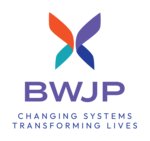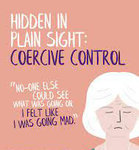





Who’s right? Who’s wrong? And how does it affect the kids?
Figuring out family dynamics in custody cases can be tricky, but the Battered Women’s Justice Project (BWJP) in St. Paul has a tool to make it easier.
The SAFeR framework is designed to help gather, synthesize and analyze information about the context and implications of domestic abuse in order to improve informed decision-making. It can be used by anyone who make decisions on custody, child support, or child welfare for families – from attorneys, custody evaluators, guardians ad litem (GALs), parent consultants (PCs), court staff, judicial officers, dispute resolution professionals, advocates, and pro se survivors representing themselves in court.
It’s a systematic approach according to BWJP’s Ana Martinez-Mullen.
In one family, a judicial officer might order a full order for protection (OFP) for mom and children, although mom didn’t want it to cover the kids so that dad can still do childcare while mom goes back to college. In another case, dad might not have physically harmed mom in front of the kids but he was abusive in other ways that they saw – breaking glass and leaving the house in disarray when he was angry. But the judicial officer orders 50/50 parenting time anyway.
Those who use the 62-page SAFeR guide dig into not just what happened but also how it affects a family unit.
The framework was developed by Loretta Fredericks and Gabrielle Davis, who have since retired from BWJP, based on research and in collaboration with various others, including the Association of Family and Conciliation Courts (AFCC). Grant funds came through the Violence Against Women Act.
ASKING THE RIGHT QUESTIONS
The first step is to screen for domestic abuse, which can be physical, emotional, financial, sexual or psychological. “Domestic violence is undercounted,” pointed out Martinez-Mullen. There might have never been an OFP or a police call or a visit to the hospital. “If I’m a practitioner and only looking for those indicators, I’m going to be missing a lot of stuff.”
Step two is to assess the nature and context of the abuse, and step three is to focus on the affect of the abuse.
SAFeR helps practitioners ask the right questions. “I don’t think the onus should be on the survivor to know what to say,” said Martinez-Mullen. “Practitioners need to know what questions to ask.”
These questions help get at the nature and context of the violence, and what the effects of it are. At the base is “who is doing what to whom and why,” said Martinez-Mullen.
One partner might push to instill fear, while the other pushes to escape. “These nuances are going to have a different affect on the children,” she pointed out.
Questions on the SAFeR list ask who was responsible for childcare and making daily decisions; if a person has freedom to come and go as they’d like; if they have access to money, bank accounts, food, housing and transportation; and if they have ever been burned, slapped, or pinned down by the other. Risk assessment factors include increase in frequency/severity, access to firearms, recent separation, threats, illegal drug use, alcohol dependency, assault during pregnancy, stalking, suicide attempt, or major mental illness.
When there is no documentation of abuse, it could be that a) there was no abuse, b) the abuse happened but was never reporter, or c) the abuse happened and it was reported but it was never documented. If the physical abuse was relatively minor, it could a) not be relevant to the case, b) because a low level of physical violence was all that was required for the abuser to maintain power and control over the victim, or c) while the physical abuse is nominal there are other risk markers that indicate a heightened danger.
If allegations of abuse were not raised until the custody case was filed, a) the abuse never happened and the victim is trying to “get a leg up,” b) the abuse happened and the victim is trying to “get a leg up,” or c) the victim did not disclose abuse until it was necessary.
If the alleged abuser seems nice enough, a) the abuse never happened, b) the abuse happened and the abuser has a pleasant disposition, or c) the abuse happened and the abuser is a good manipulator.
There are multiple pages in the SAFeR guide listing various scenarios and what they might mean.
After drilling down to the specifics, a practitioner can then make recommendations that are responsive to the needs of the survivor. As the SAFeR guide points out, the family court system is often focused on divvying things up, including the various aspects of the child’s life. It does not always account for post-separation abuse, ongoing coercive control, or the safety and well-being of the battered parent.
NATIONAL LEGAL CENTER ON CHILDREN AND DOMESTIC VIOLENCE
Ana Martinez-Mullen is the National Legal Center on Children and Domestic Violence Project Director. This division of the BWJP was formerly known as the SAFeR Project, but was renamed earlier this year. In part, it was done to make it easier to find. A survivor or professional looking for information will put the words “children” and “custody” and “domestic violence” into a search engine. But they don’t know what they don’t know, and they probably don’t know about SAFeR.
“At NLCCDV, we’re looking at the intersection of anything that has to do with children and the effects of domestic violence in their lives and how that reflects in our different systems. We are looking at family court. We are looking at child support enforcement. We are looking at child welfare,” observed Martinez-Mullen.
This means that NLCCDV isn’t focused on one particular area but many. “We know that survivors move in different areas. They move within all these systems and oftentimes they’re involved in all these systems at the same time,” said Martinez-Mullen.
As a former domestic violence shelter advocate and attorney, Martinez-Mullen knows that women are often working on orders for protection, divorce, child custody, child protection, and child support at the same time.
“These systems don’t talk to each other and they’re giving the survivor conflicting messages,” stated Martinez-Mullen.
A child protection worker might advise a mom to keep her children away from an abusive dad. But a judge in family court will punish her for keeping a child away from dad, label it “alienating behavior,” and not consider what she was told by child protection.
BWJP is a technical assistance provider, offering training and resources. “To me it is very important that as we move forward that we are always keeping in mind the number of survivors that are moving through the system without any type of representation or guidance. So when we’re creating tools and we’re thinking about the webinars that we offer, we’re trying to keep that in mind.”
She pointed out that the SAFeR model can help women pinpoint issues and make connections that are important for others to know.
COERCIVE CONTROL LAWS
In everything they do, BWJP works to be survivor-centered. “What would be helpful for us to know?” they ask survivors. Then they seek to share that perspective in the policy work they do.
They took this approach regarding coercive control. “There’s currently a conversation going on about coercive control,” said Martinez-Mullen. Some are pushing for it to be added to the definition of domestic abuse in states, while others think it will be used against survivors.
Coercive control is a behavioral pattern of threatening, humiliating, or intimidating actions that seek to take away a person’s freedom and strip away their sense of self. Throughout the country advocates and survivors are actively debating whether and to what degree coercive control should be codified in the criminal, protection order, or family laws of their state.
Last autumn, BWJP held listening sessions with intimate partner violence advocates, state coalition staff, and people working with survivors in criminal and civil legal systems across the United States. They spoke with over 100 professionals from 50 jurisdictions, including 44 states, 4 tribal nations, D.C. and the U.S. Virgin Islands. This year, BWJP published “Coercive Control Codification: A Brief Guide for Advocates and Coalitions.”
Minnesota state laws do not specifically call out coercive control as domestic abuse. Arkansas, California, Connecticut, Hawai’i and Oklahoma have recently added it to their state statues. It is also criminalized in the United Kingdom, Scotland, Wales, Ireland, and France, and is being considered in Australia.
“You’re going to have different definitions in different contexts,” remarked Martinez-Mullen.
The key to evaluating abuse is the nature and context, stressed Martinez-Mullen. Parent A may refuses to let a child talk to the parent B to exercise power and control. However, parent B may limit texting and phone calls from parent A because parent A is using it as an opportunity to deride and abuse the child. In this case, parent B is trying to protect the child.
Or, parent B may be limiting how often the children see parent A in order to protect them from abuse.
Parent A may use this to claim parental alienation or resist/refuse, and someone not familiar with the dynamics of abuse may incorrectly use a coercive control law to further harm a survivor.
Christina M. Jones heads up the BWJP coercive control division. Find more information and the Taking Back Control podcast online.
A NEW BRAND AND WEBSITE
This fall, the Battered Women’s Justice has introduced a new logo and updated website. The website had a wealth of information, but wasn’t being highly used, pointed out Victoria Taylor, communcations manager. They worked to organize it to make it more user friendly.
The new logo is an abstract butterfly icon that symbolizes metamorphosis, change, growth and freedom. The four vibrant colors used represent the four movements the BWJP works within: gun violence (orange), domestic violence (purple), trafficking (blue) and sexual assault (teal).
Martinez-Mullen has been with BWJP for one and a half years. She sees value in the work she does.
“Information is power,” said Martinez-Mullen. “If I can be a tiny piece of that puzzle and be useful to affect some change and work to make the system more responsive to their needs, that’s what counts.”
BWJP staff is spread across the United States, and Martinez-Mullen works out of Florida. The BWJP headquarters, headed by its new chief executive officer Amy Sanchez, is located at 540 Fairview Avenue N, Suite 208 in St. Paul. For more information, call (800) 903-0111 x 1 or browse bwjp.org.
Read more in our Voices Against Violence series here.
• An oppressive experience:’ 57 hearings, 80 court orders and 12 parenting time schedules
• Domestic abuse victim jailed during Domestic Abuse Awareness Month
• A SAFER approach to custody cases
• "I RAN'
• She must have done something wrong
• Assume mothers get custody of the kids in domestic abuse situations? Think again.
Comments
No comments on this item Please log in to comment by clicking here